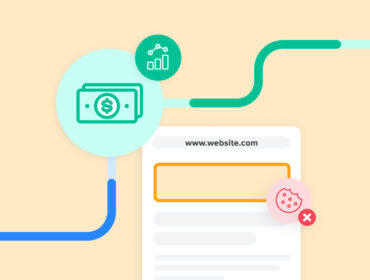How the ‘Cookie Apocalypse’ Is Good for Marketers
You’ve probably heard that the end is finally nigh for marketers who rely on cookies. While the chatterati have blathered for years about the cookie apocalypse, this time, it seems, it’s for real.
In May, Google said that Chrome would soon limit the effectiveness and make it much easier to block a vast amount of cookies, joining Safari and Firefox. Now, the browsers that 82% of people use will be very unfriendly to those little pieces of text and numbers placed onto people’s devices to track them around the internet.
Publishers, meanwhile, are pulling away from data management platforms in favor of “segmenting engines that don’t require cookies,” according to AdExchanger. And privacy laws in Europe and the U.S. are spurring further skittishness.
For whom the bell tolls sweetly
Yet, for upstanding marketers (by which we mean those who are neither bottom feeders nor evildoers), the end of the cookie may actually be good news. That’s in part because the so-called “end” of the cookie really means new restrictions on third-party cookies. Those are the ones dropped on the unsuspecting (by entities other than the websites they’re visiting) that are then used to mercilessly track those people in ways they probably don’t suspect.
By contrast, first-party data – the info marketers and publishers get directly from people who visit their websites, sign up for newsletters, and register to get products, services, and special offers – is still fine to use with those people’s permission and within reasonable parameters.
So, marketers and publishers who have first-party data and know how to use it will have a leg up on competitors who don’t. Plus, any additional data marketers use from reputable partners will now be more verifiably accurate and clean. Some advertisers are already adding consent management platforms to their marketing mix to confirm whether users have given permission for messaging. Marketers can match the data they have to the more reliable data they can get, crafting a powerful mix they can use for targeting now and projections later to help optimize.
The new regime is making the data in use more powerful than it has been, a better indicator of people’s real interests and needs.
For success, handle with care
But the new landscape doesn’t mean that all a marketer need do is simply click some dashboard button then take a nap while the sales role in. There’s a lot to learn and a lot to monitor. “If you work in display advertising at a brand,” LiveIntent SVP of Global Marketing Kerel Cooper wrote on Streetfight, “your entire set of knowledge will soon be different.”
“You’ll need to learn how first-party data looks, is captured, and how to connect first-party data that represents intent to first-party stable identifiers like email,” he added.
Marketers will also need to vet their vendors who work with data to make sure those partners keep their data immaculate and follow industry best practices in handling it.
Stay Ahead of the Competition
For marketers with the wherewithal to marshal the best of what first-party data can offer, the “cookie apocalypse” should turn out to be a boon – a catalyst to developing real relationships with customers who will partake of offerings time and again. Those who don’t step up will, to quote Cooper, “be defeated by a rival house that understands their first-party data assets and knows how to use them as a weapon.”
The marketers who win will be the ones with the strategies that match the times. For them, it could be just the beginning.
—
Download our Campaign Intelligence report to discover the data technologies and identity-driven strategies that are helping marketers better understand who their customers truly are.



